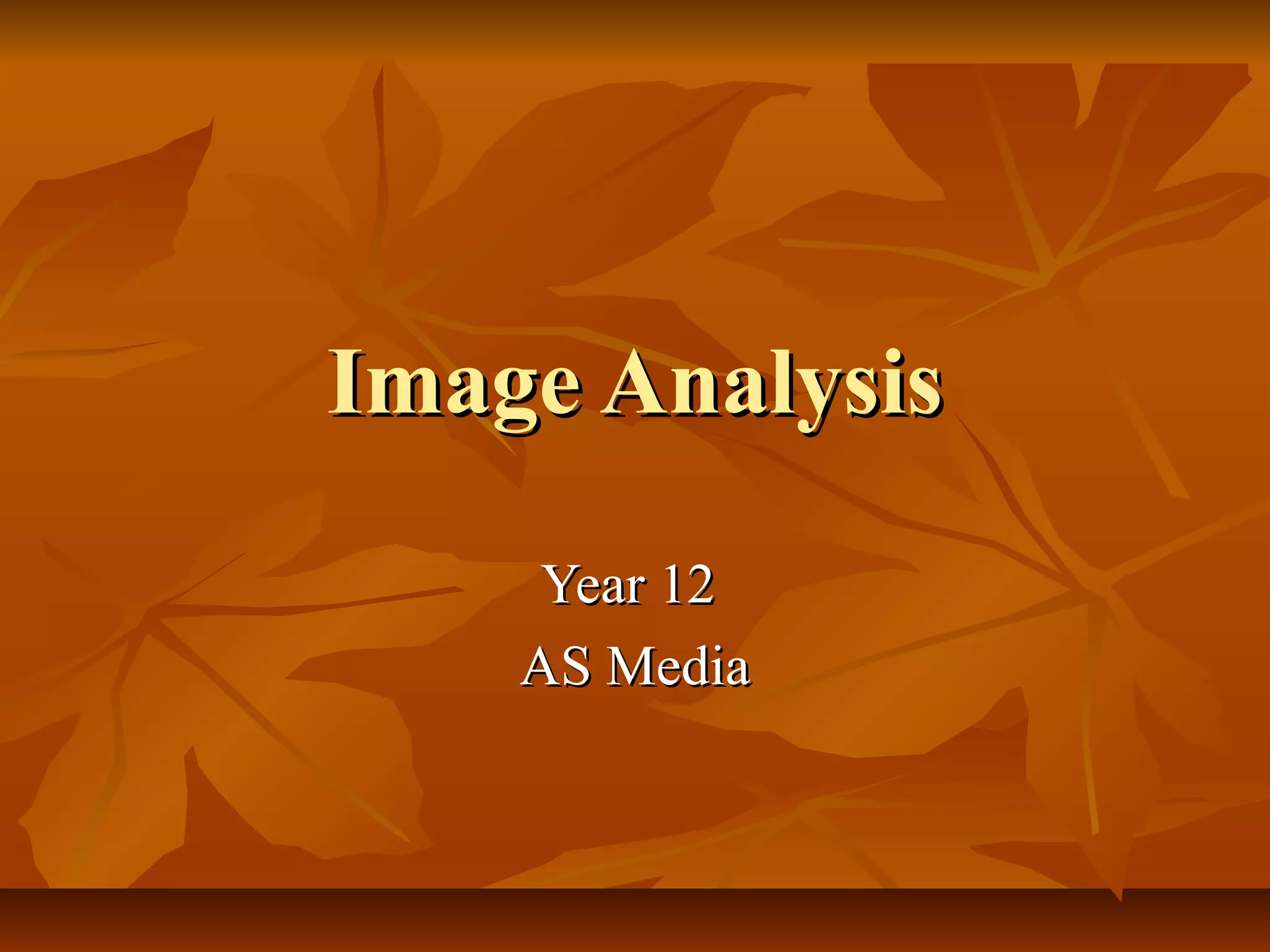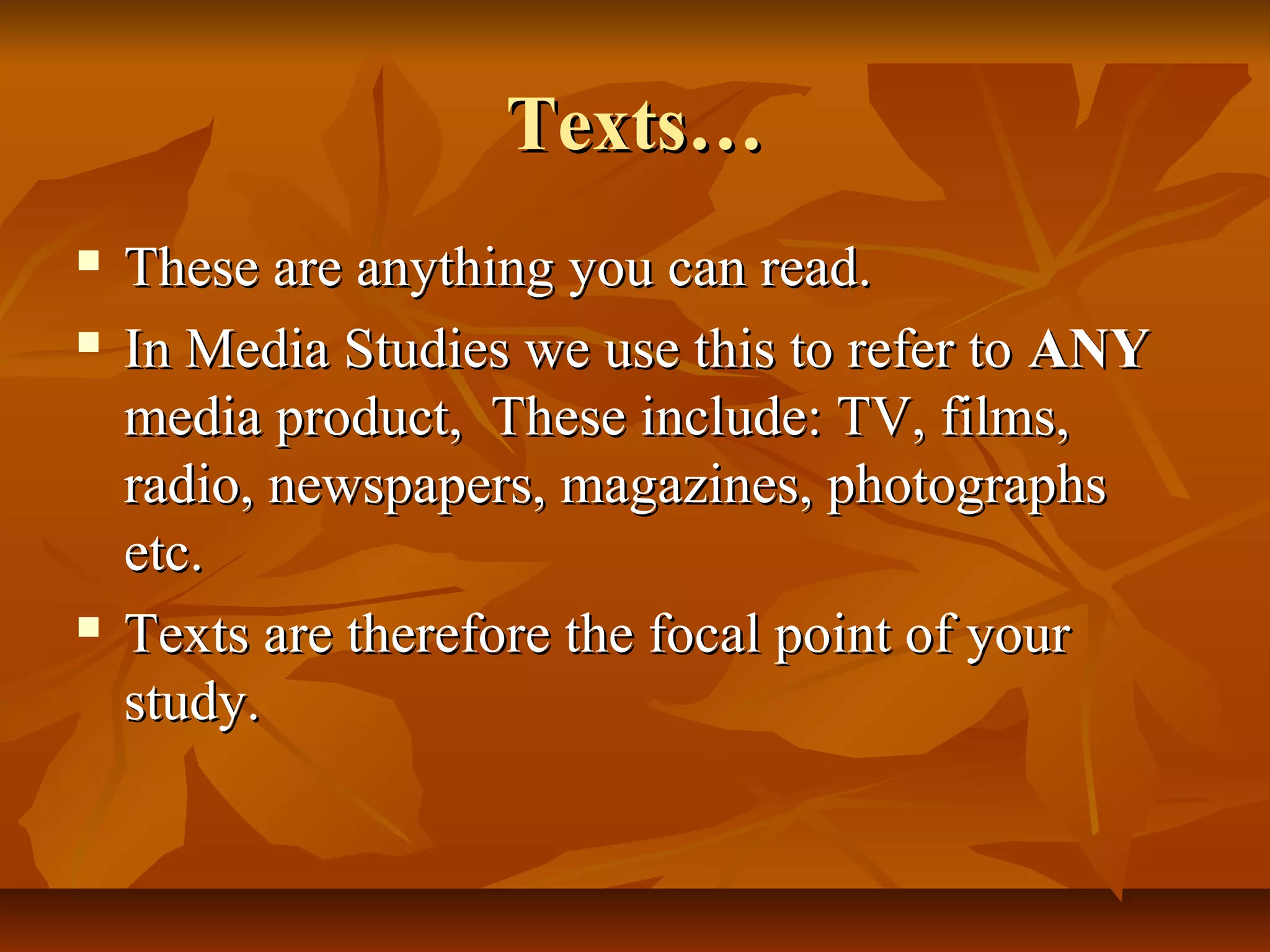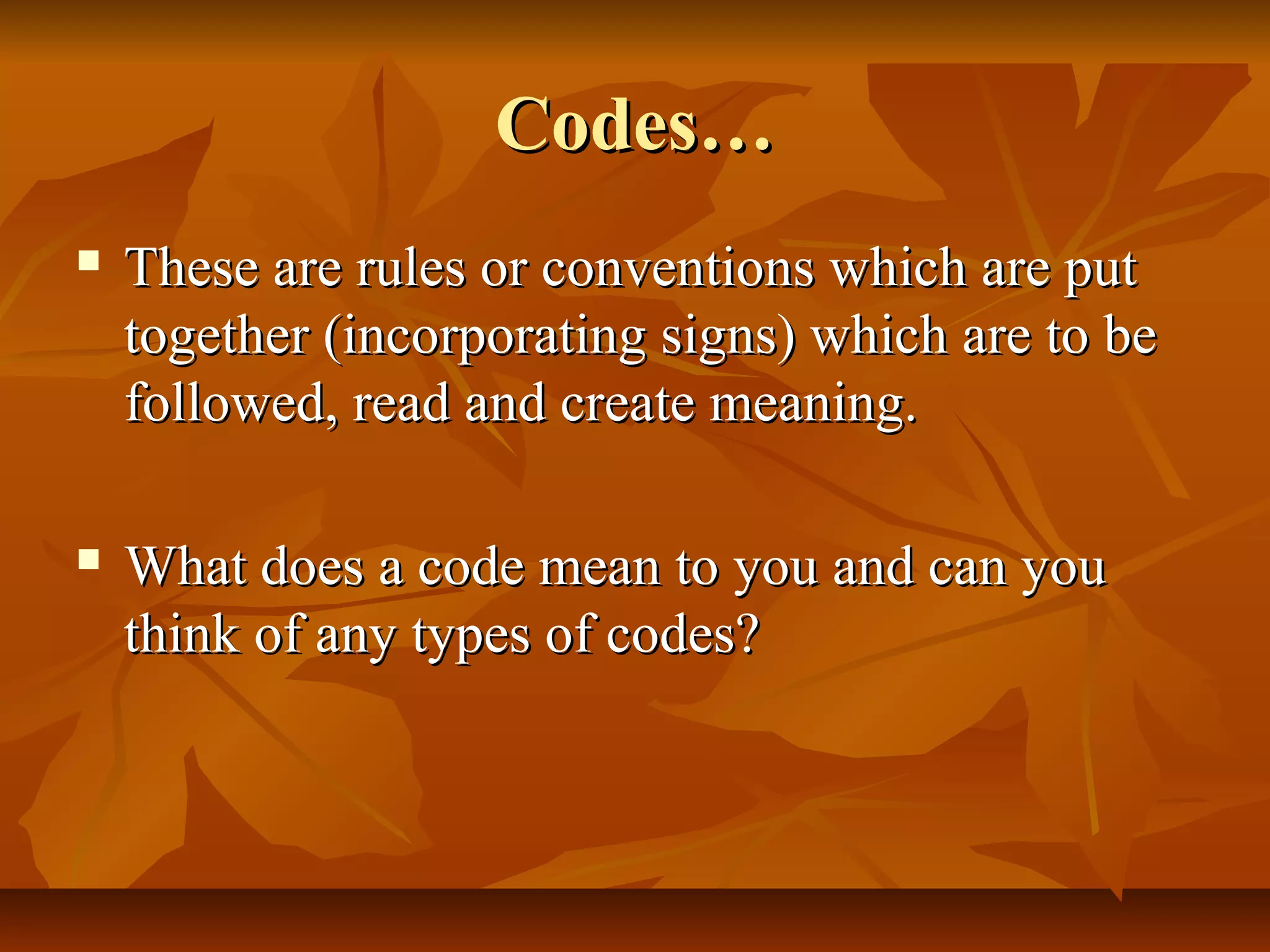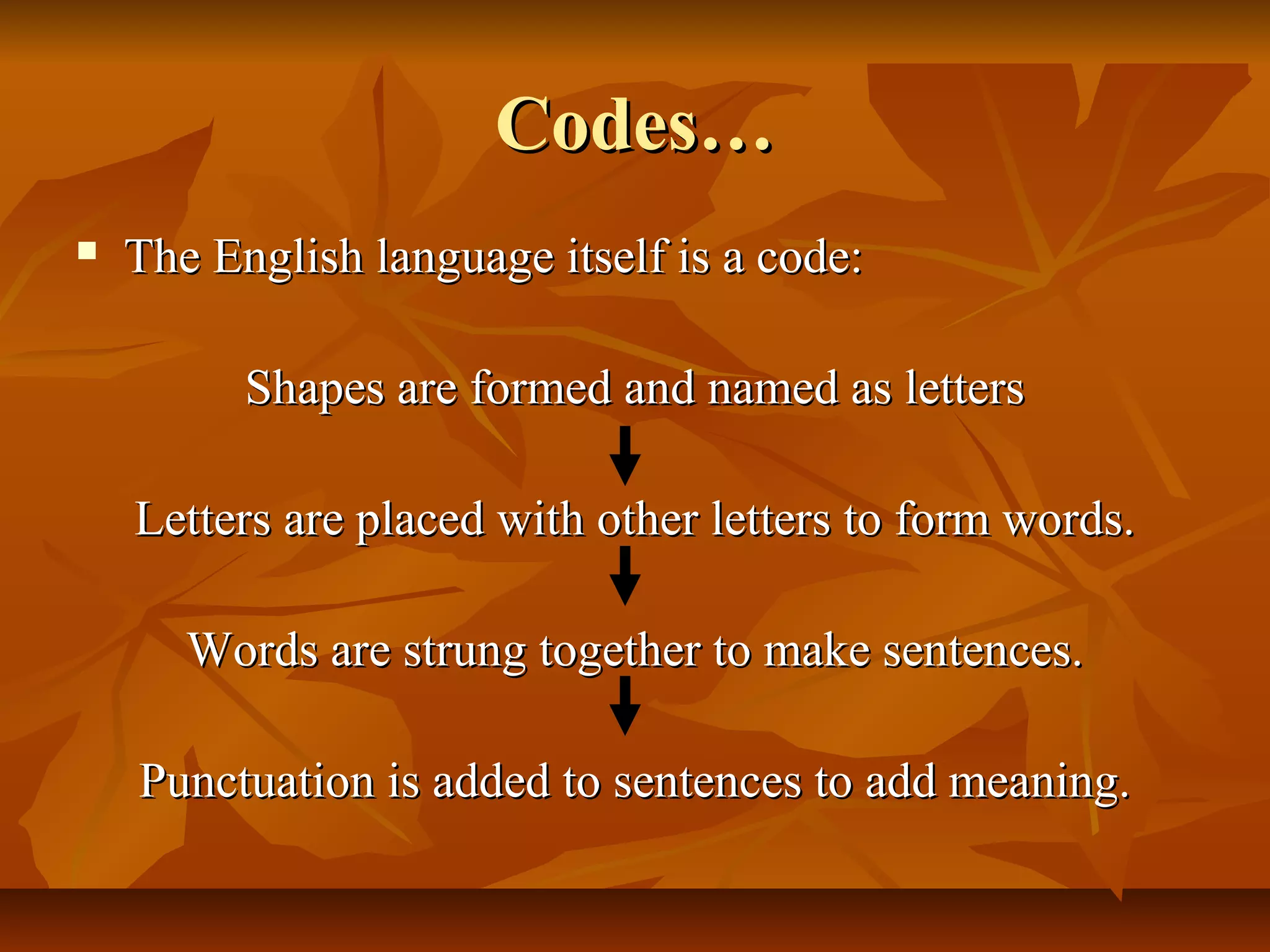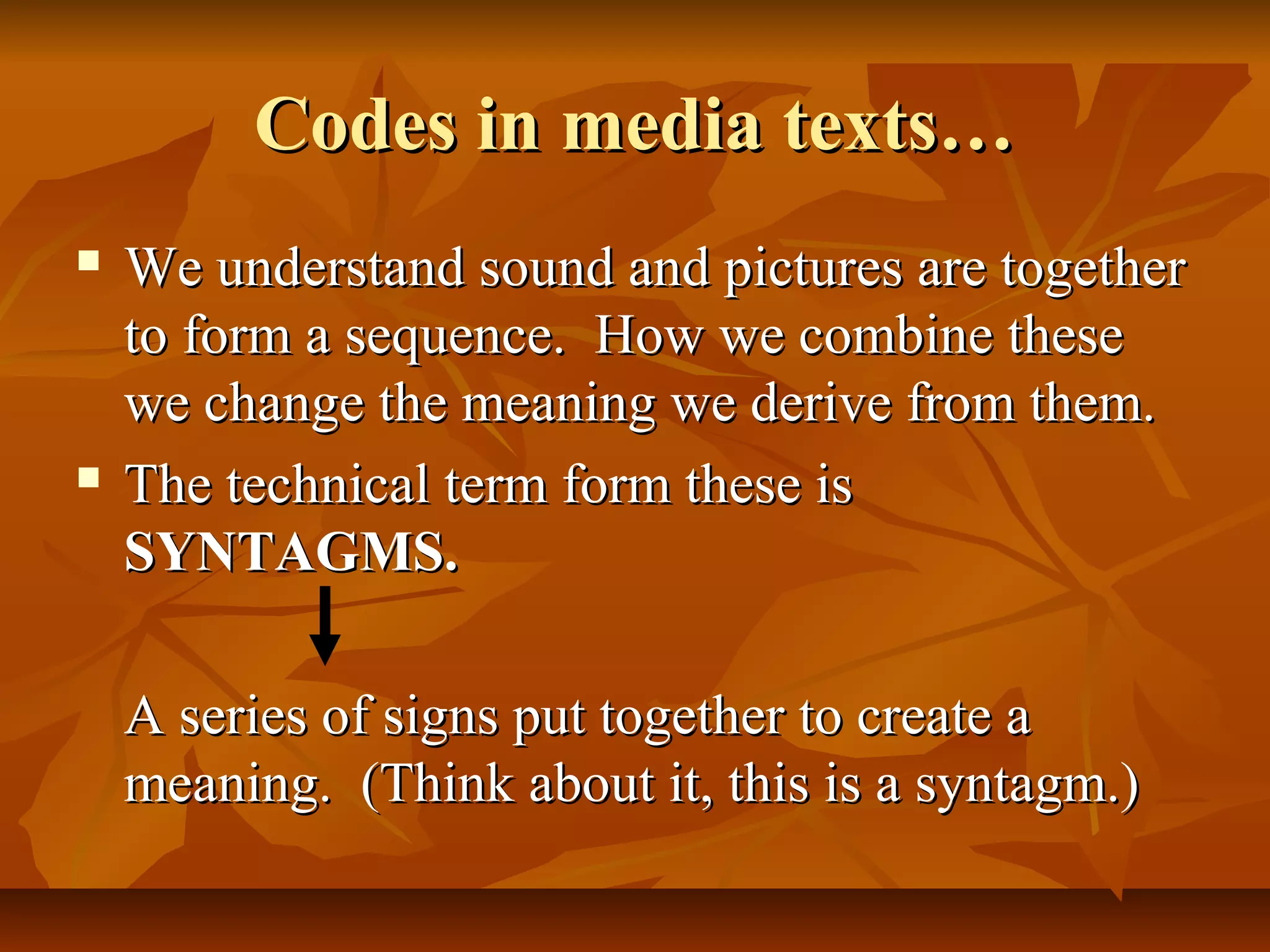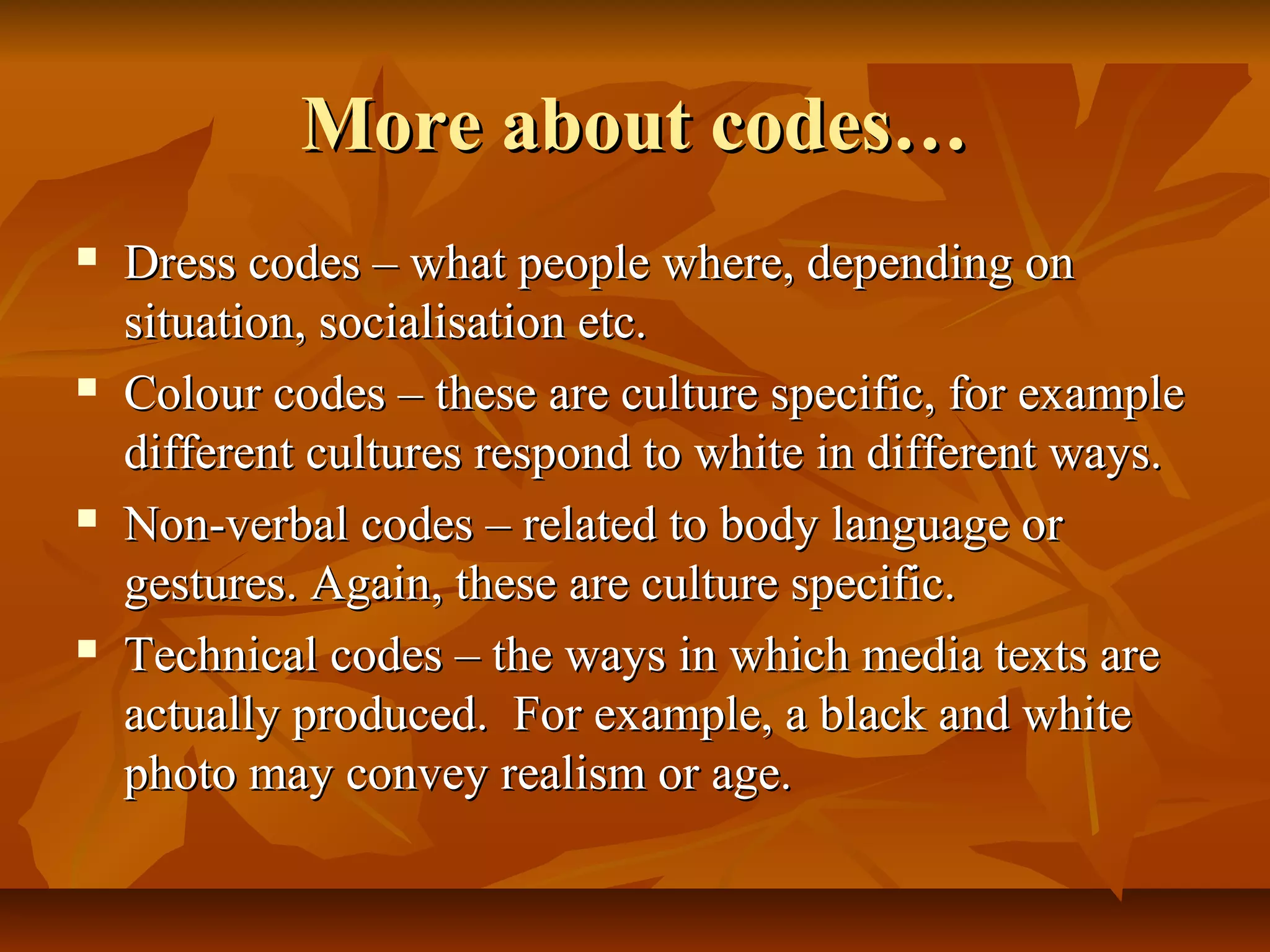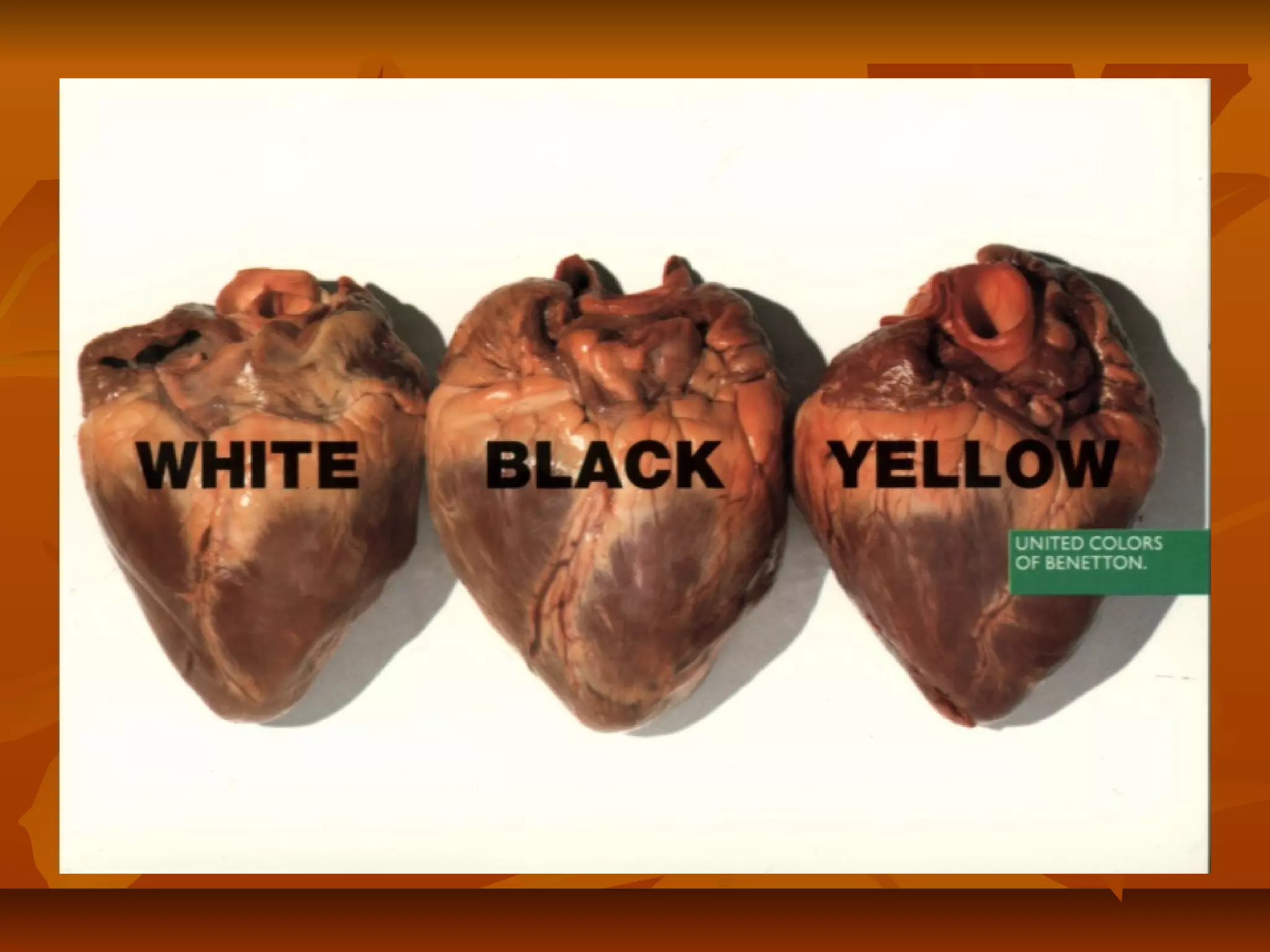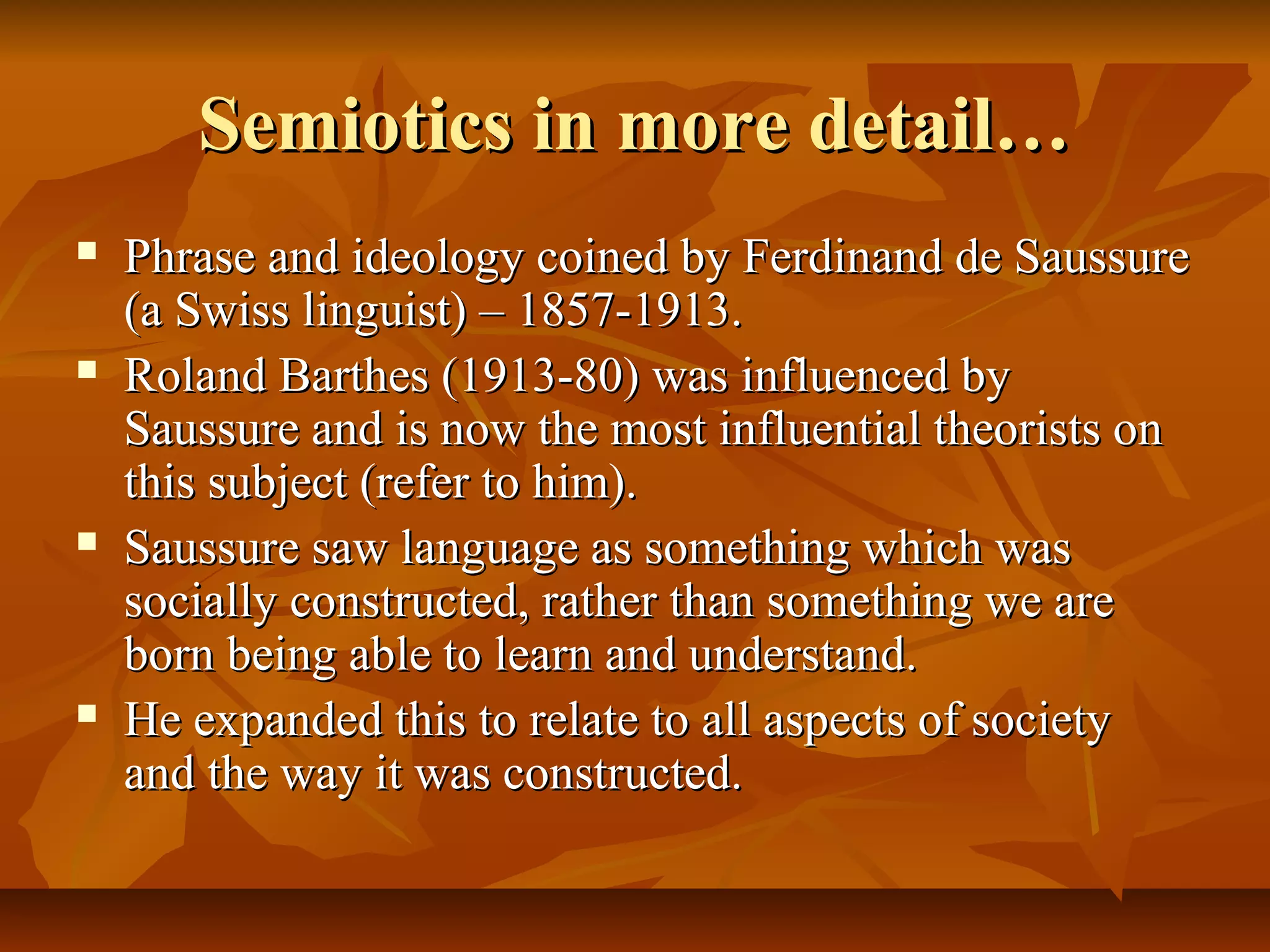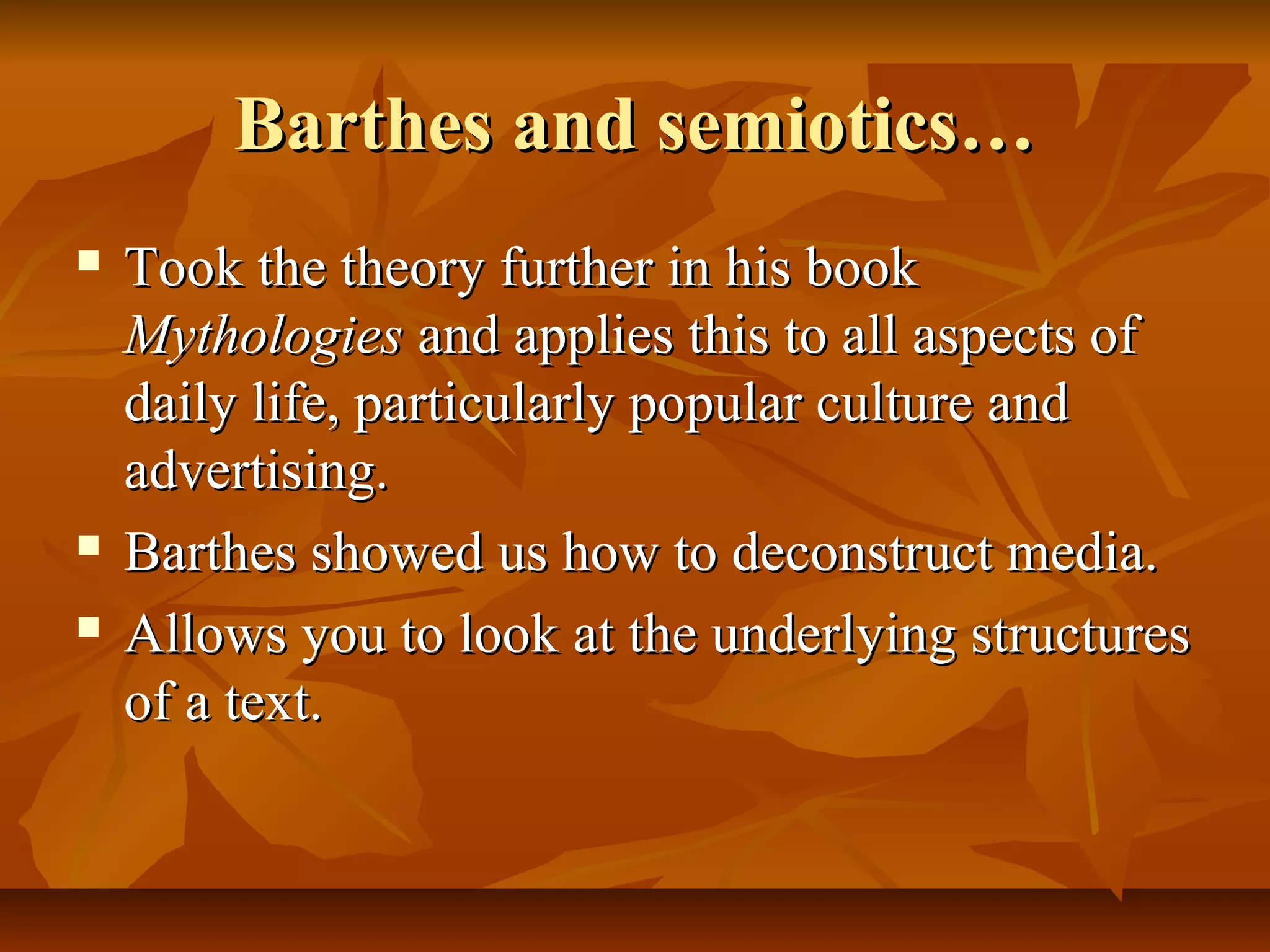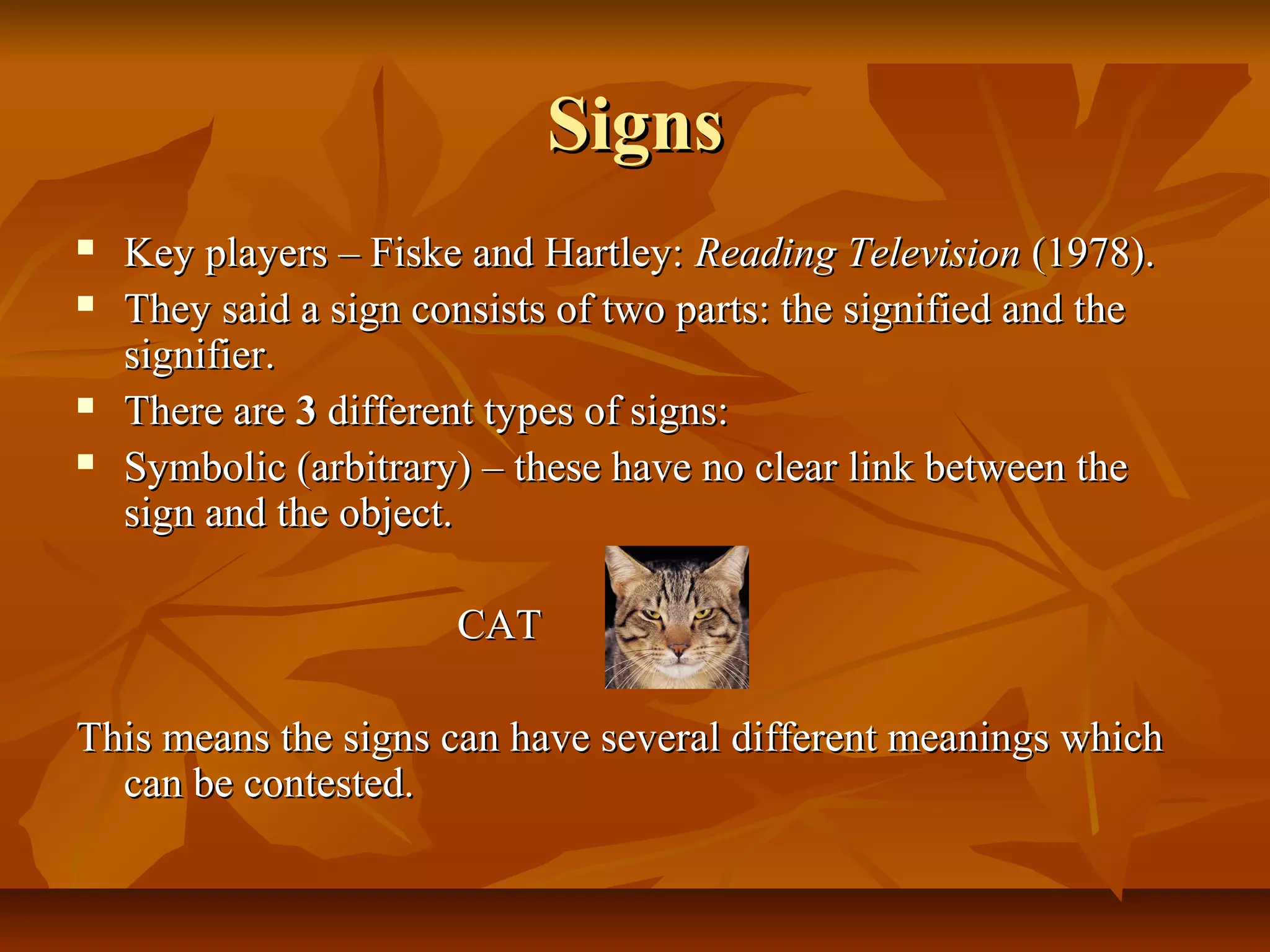This document discusses key concepts in media studies related to analyzing images and texts. It defines texts as any media product that can be read, including TV, films, radio, newspapers and magazines. Codes are rules or conventions that create meaning when signs are combined in a syntagm, or series. Different types of codes are discussed, such as dress codes, color codes, and technical codes. Semiotics, coined by Saussure and expanded on by Barthes, is introduced as the study of signs and how they construct meaning. Signs are made up of a signifier and signified, and can be symbolic, iconic, or indexical in nature.
